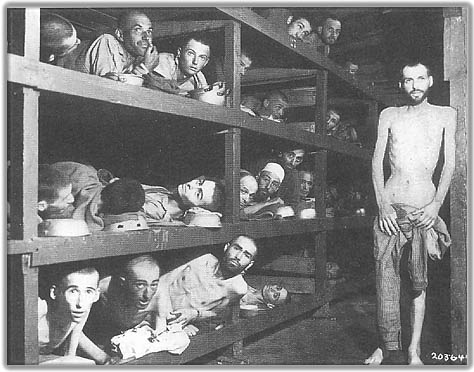
As deportations from all over Nazi held Europe escalated, rail cars were utilized to transport people to the camps. The most common were freight and livestock trains. The human cargo were often times loaded so many to a car, sometimes for days without food or water, that there was not even room for the the dying to fall to the floor.
Upon entering the camps, inmates were further stripped of whatever possessions the had left to them. Whatever luggage was carried on the trip was piled next to the trains to be sorted later by komandos (work groups) for whatever valuables they might hold. Clothes were taken, hair was shorn and put in bags, and personal jewelry was removed from the owners. This room was one of the hardest to walk through. The remaining smell of the leather mixed with the long dead human scent brought tears to my eyes.

Upon arrival to the camps, everyone was separated into two groups. Those who were doomed to die and those who were doomed to live. This is the reconstruction of a bunk from a typical block house were the inmates were kept when not working.

This picture I did not take. I have added it to the page to emphasize the conditions for living within the concentration camps. This shows a typical living arrangement in a block. It also shows how various stages of malnutrition causes the human body to consume itself to replace outside nourishment. In many, many cases, the consumption was total.

The reproduction of a wall built from the destroyed headstones in a Jewish cemetery spans almost an entire wall in the Museum. After desecrating this holy ground, the Nazis used the site as a place of execution.